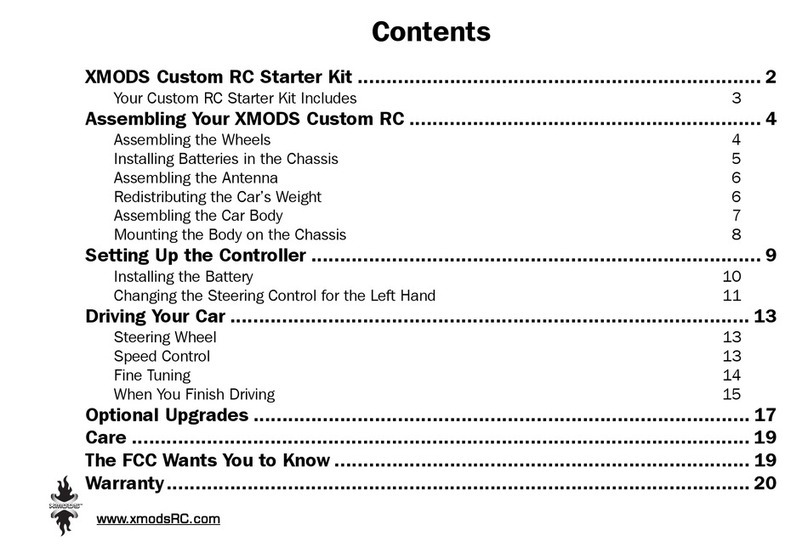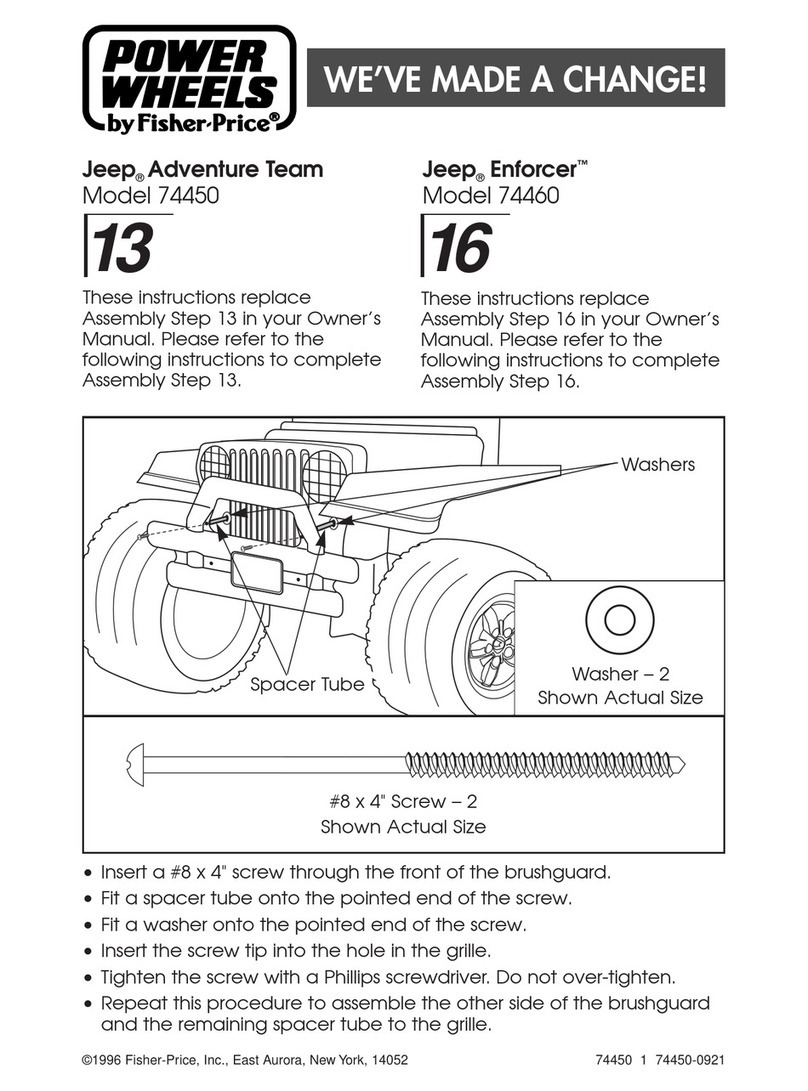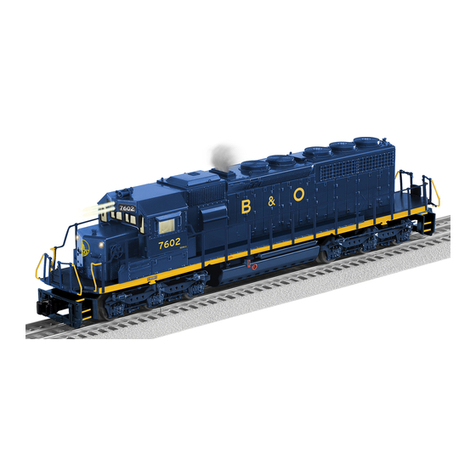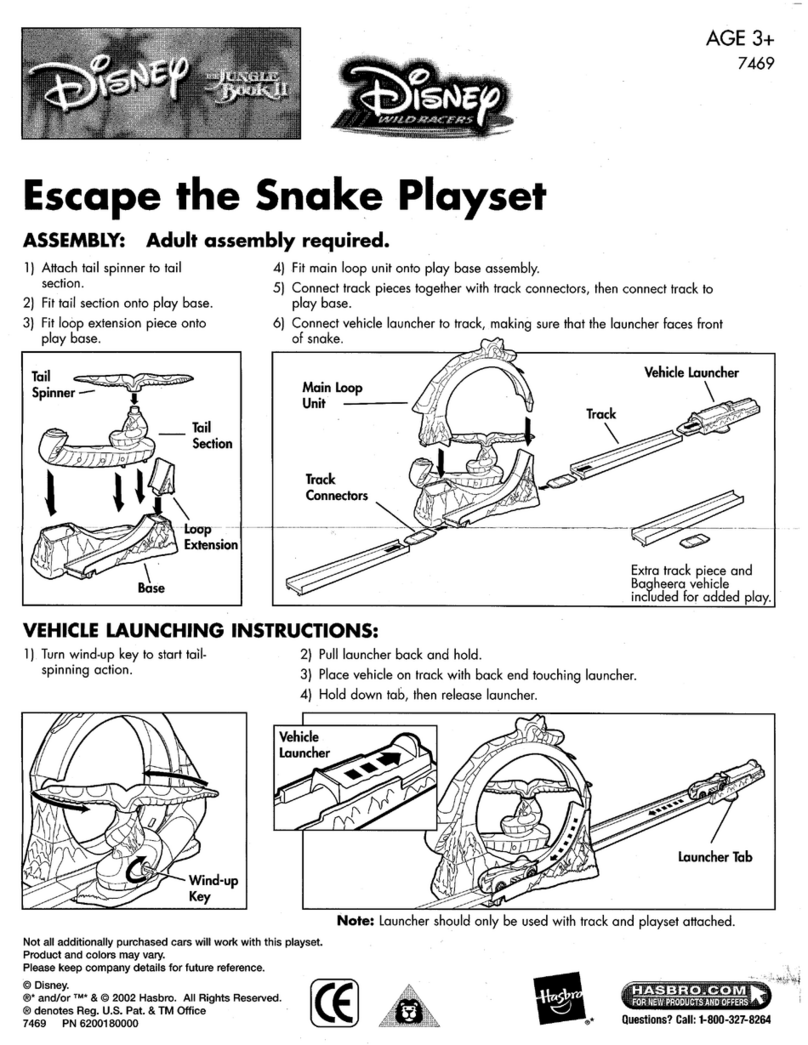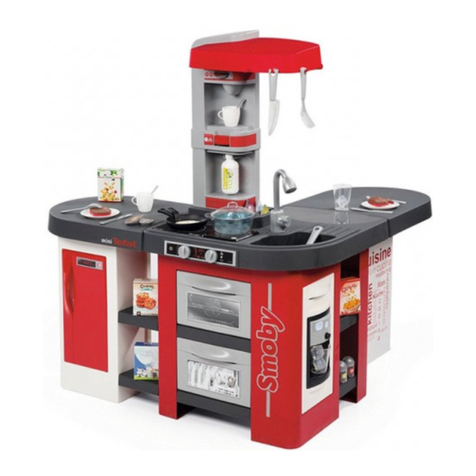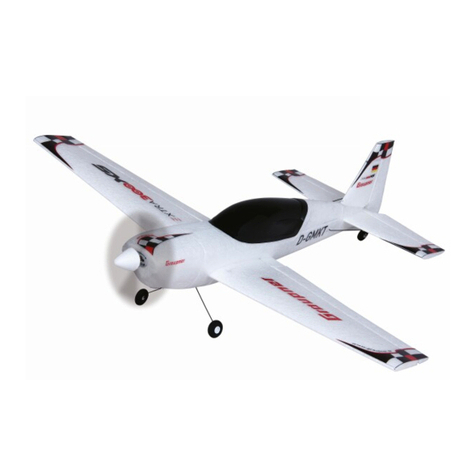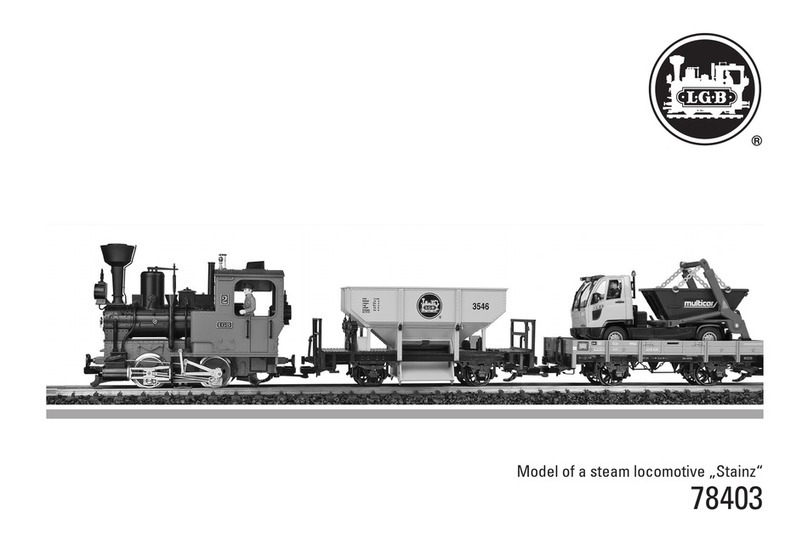AEROMASTER Edge540 II User manual

1
Aeromaster’s
BME Aircraft
30% Edge540 II and III ARF
Instruction Manual
Congratulations and thank you for purchasing BME Aircraft’s 30% Edge540. Our earlier version of the 30%
Edge540 had earned a reputation for being a great precision aircraft as well as an outstanding 3D performer.
We took this fantastic aircraft and made it even better with the release of the 30% Edge540 II and III.
Designed with 85 sq inches more wing area while reducing the total weight has made this aircraft a true
performer. Whether you want an aircraft precise enough to compete in IMAC or to turn it loose for the wildest
3D maneuvers on the planet, our Edge540 is a perfect choice.

2
We believe you will find this to be one of the finest flying aircraft in the market. Most modelers will find
assembly of this aircraft simple and straightforward. We recommend the builder follow the step-by-step
instructions to achieve the best performance and to ensure nothing was over looked. This manual also includes
tip sections throughout that may help you in key areas during assembly. Please familiarize yourself with this
manual before assembly.
This manual is broken down into ten chapters for simplicity:
Chapter 1 - Parts Inventory
Chapter 2 - Preparation for Assembly
Chapter 3 - Landing Gear and Tail Wheel Assemblies
Chapter 4 - Canopy and Fuselage Hatch
Chapter 5 - Engine and Firewall Installation
Chapter 6 - Cowling installation
Chapter 7 - Control Surface Installation
Chapter 8 - Hardware Installation
Chapter 9 - Radio and Control Surface Setup
Chapter 10 - Final Inspection and Pre-Flight
Additional items needed to complete this aircraft, which are not included:
An engine, within the recommend range, and propeller
6 channel computer radio and receiver recommended
Batteries and switches (with regulators if using Ion batteries)
Two aileron servos rated at least at 100oz of torque
Two elevator servos rated at least at 130oz of torque
One rudder servo rated at least at 150oz of torque (250oz recommended)
One throttle servo with push rod and links
Optional choke servo with push rod and links
One fueling dot or fueling device
3 to 4 feet of fuel tubing
Foam rubber
3-½ inch spinner
30 to 45 minute epoxy
JB weld
A bottle of thin CA
Covering iron
A pull-pull cable with crimps and 4/40 connecters
Various modeling tools for assembly
½ inch low tack masking tape

3
Chapter 1
Parts inventory
Place an “×” to ensure your kit is complete:
1 Fuselage
1 Firewall
1 Fuselage access hatch
2 Wing panels (1 right and 1 left)
2 Ailerons (1 right and 1 left)
2 Horizontal stabilizers (1 right and 1 left)
2 Elevators (1 right and 1 left)
1 Rudder
1 Fiberglass Cowl
1 Pair of fiberglass wheel pants
1 Composite landing gear
1 Pair of wheels
1 Tail wheel and tiller assembly
1 Canopy
1 Carbon fiber wing tube 1-1/4”x3’
1 Carbon fiber stabilizer tube ½ inch
2 Nylon wing retention bolts
1 28 inch Carbon fiber pushrod
8 Metal pushrod ends
4 Sets of aluminum control horn assemblies
(Edge III)
1 Rudder aluminum control horn assembly
(Edge III)
1 20oz Du-bro fuel tank (Edge III)
6 4/40 ball links (Edge III)
1 Set of additional various hardware
1 Vinyl graphics package
1 Set of wing bags (Edge III)
1 Fuselage cover (Edge III)
1 Pair of stabilizer bags (Edge III)
If any of these parts are missing immediately contact BME Aircraft during normal business hours.

4
Chapter 2
Preparation for Assembly
Professionals utilizing premium Ultracote covering carefully covered your model. Due to climate changes
during shipping, the models covering may have loosened and/or winkled. It’s a good habit to go over your
model with a covering iron to ensure all joints, seams, and edges are properly sealed.
Ultracote is a lower temperature film that seals and shrinks at lower temperatures. Make sure you set your iron
on a low temperature initially to get a feel for the correct temperature setting and adjust accordingly. Higher
temperatures will cause your covering to over shrink and distort. Also, use a sock over your iron to ensure a
scratch free finish.
Place an “×” to ensure task completion:
Go over you model as necessary with a covering iron to
insure all joints, seams, and corners are sealed properly.
Use your iron to ensure the areas where cutouts are
needed for your hardware are located and sealed down,
such as servos; tubes, and control horn mounting
locations.
Next, we’ll need to cut out the covering at the locations for hardware and final assembly. Make sure you use a
sharp hobby knife so your cuts will be clean and straight.
Start with the fuselage, Locate and cut out the servo and
stabilizer and wing tube locations.
Locate and cut the location for the anti-rotation pins
and mounting holes for the stabilizers and wings.
Locate and cut the two mounting bolt locations for the
canopy and the two pull-pull exits.
Locate and cut the servo mounting location for each
wing half.

5
Chapter 3
Landing Gear and Tail Wheel Assemblies
Now that we’re ready for assembly, we are going to start with the main landing gear first. You will need to
locate the following parts to begin assembly.
Place an “×” to ensure task completion:
What you will need in this chapter for the main gear:
Fiberglass main gear
One pair of 3 ½ inch wheels
One pair of wheel pants
One pair of axles with one pair of compression or lock nuts
Two wheel collars
Four 4-40 bolts, spring washers, flat washers, and blind
nuts
Four 8/32 bolts, spring washers and flat washers
Fuselage
Not Provided:
½” and a 9/16” inch wrench
Blue loc-tite
Allen wrench for wheel collars
White wood glue such as Elmer’s
Fasten the axles to the main landing gear with the lock nuts.
Use care when tightening the lock nuts. If over tightened it can
damage the composite landing gear and cause it to fail. Only
tighten enough to lock the axle firmly in place and not rotate.
Loc-tite is not recommended here, as it will damage the nylon
bushing.
Slide one wheel collar or a 3mm piece of fuel tubing to the
inside of each axle. This acts as a spacer preventing the wheels
from moving side-to-side and making contact against the inside
of the wheel pants.
Slide one wheel on each axle and fasten an additional wheel
collar. Place the collars as close to the wheels as possible but
ensure the wheels still rotate freely. Again, we don’t want the
wheel to move from side to side and contact the wheel pants.
Also, we recommend the use of loc-tite on the setscrews of the
wheel collars to prevent them from vibrating loose.
Tip#1 Finish the end of the axle with 3mm of extra fuel tubing as added protection of wheel loss if collar
loosens during operation.

6
Install the landing gear to the fuselage using the
four 8/32 bolts, spring washers, and flat
washers. Loc-tite here is recommended.
Cut out the center wheel opening on the wheel
pants on the side with the wood mounting block.
Trim the center of the wheel pants to fit the
axles using the wood block as guide.
Raise the rear of the fuselage until the model is level and block it in place.
Hold one wheel pant in place while keeping the
bottom of the wheel opening level with your
work surface and mark your hole locations
through the mounting holes in the landing gear.
Repeat this step for the other side.
Drill the holes for the 4/40 bolts in the wheel
pants at the locations you’ve marked.
Apply some white wood glue to the inner side
of the four 4/40 blind nuts and install the blind
nuts to the inside of the wheel pants.
Mount the wheel pants to the landing gear using four 4/40 bolts with spring
and flat washers. Use loc-tite on these bolts as they are prone to severe
vibration.
Tail wheel assembly and mounting:
What you will need for the tail wheel assembly and tiller:
Carbon fiber tail wheel bracket with packaged hardware
One metal tiller assembly
Fuselage and rudder
Not Provided:
A cross tip screwdriver (Phillips)
One small Allen wrench for the wheel collars
Blue loc-tite
Install tail wheel to the bracket using one washer on each side of the brass
bushing and install the small wheel collar. Use blue Loc-tite on the setscrew
of the wheel collars.

7
Mark a centerline on the tail wheel bracket-mounting block.
Place the tail wheel bracket on the mounting block ensuring the bracket holes line up with the centerline
and mount the bracket using the two large wood screws.
Remove the bracket and coat the threads created in the wood-mounting block with thin CA and re-
assemble.
Install the steel tiller horn just behind the hinge line on the bottom of the rudder using the two small
wood screws.
Tip#2 Set aside your two tiller springs, we will install those later after the rudder is mounted.
Chapter 4
Canopy and Fuselage Hatch
Place an “×” to ensure task completion:
Gather the following for canopy and hatch installation:
Canopy
Fuselage and Access Hatch
15 small wood screws
Two 4/40 bolts with spring and flat washers
Not Provided:
½ inch low tack masking tape
Drill and small drill bit for wood screws
Canopy glue (optional)
Install the hatch on the fuselage using two 4/40 bolts with spring and flat washers provided.

8
Trial fit the canopy to the fuselage access hatch to determine screw locations.
Mark evenly spaced locations for
the screws using at least three or
four per side. Double check to
ensure all the marked screw
locations will go into the center of
the hatch rail.
Remove canopy from the access
hatch and drill the marked
locations for the canopy screws.
Install the canopy using the small
wood screws. If satisfied with the
fit, remove the canopy and hatch
and wick a small amount of thin
CA into each of the screws holes
on the hatch. Once dried, reinstall
canopy with optional canopy glue
if desired. Caution! CA will fog
the canopy if installed before
completely drying.
Chapter 5
Engine and Firewall Installation
Your firewall is not pre-mounted so our customers can select from a wide variety of engine choices. It is nearly
impossible to cover every engine installation choice in this manual but we’ll cover a few. Your aircraft was
designed around the more popular lightweight gas (3 to 3 ½ lbs) 50cc size motors. Also, we have provided a
canister tunnel on our Edge III for those desire quieter operation. Please consult the manufacturer for the
installation of optional canister.
Your Edge540 will also accept heavier motors like the Zenoah 62. If using a motor in this weight range (4+
lbs), you may want to mount the firewall further back to help attain the proper CG range. This in turn may
cause you to mount the cowl further back. If necessary the cowl can be trimmed and moved back further as
needed.
We will cover the installation of two popular engine choices in this manual, the BME and the DA 50cc motors.
Follow your engine manufactures instructions for any additional guidance. Lets get started!

9
Place an “×” to ensure task completion:
What you will need in this chapter:
Firewall and Fuse
Nine1/8 inch dowels cut to ½ inch lengths
Triangle stock included with the kit
Not Provided:
30 to 45 minute epoxy
An engine in the recommend size range
3 ½ inch spinner
Propeller
A drill and drill bits
Center punch
A 12” square or incidence meter
½ inch low tack masking tape for DA-50
White wood glue such as Elmer’s for BME 50
Note: Our measurements for setting the right thrust are just a guide and will get you in the ballpark. Since
the distance from the firewall to the spinners back plate can very with type and installation, we recommend
using your own calculations.
Also with the engine is installed, you will want 6 ½ to 7 inches from the firewall to the spinner back plate for
proper cowl placement.
BME 50 and DA-50 installation
First, we’ll find and mark the vertical centerline on the firewall. Take the firewall and measure it from
side to side to find the center and draw a vertical line using your square.
Draw another line parallel approximately 5mm to the right of the vertical centerline. This gives us our
offset centerline for 3 degrees of right thrust.
Using your square, make sure the right side of the motor box matches the left side. If not, use the square
to as a guide for the next measurement.
Now measure and draw a vertical line down the inside of the right hand side of the motor box back
0.5cm (5mm). This establishes our 3 degrees of right thrust built in to the firewall. Re-check your
measurement to ensure its square and test fit the firewall.
Mount the firewall with the front of the firewall flush
on the left and at your marked 5mm line on the right
using at least 30-minute epoxy. Make sure it’s square
up and down to ensure you have not created any up or
down thrust. Also ensure your thrust line matches the
lines on the outside of the motor box. Use a few
clamps to hold the firewall in place until the epoxy has
cured.
Epoxy the 3 pieces of triangle stock in place on the
inside between the motor box and firewall to re-enforce
the firewall. Epoxy the one additional triangle stock in
place in front of the firewall on the right side for added
strength.

10
Next, measure 2 ¾ inch from the bottom of the motor box and draw a horizontal line to establish the
thrust line. Double-check all your measurements.
BME 50 users only. Using the offset centerline and thrust line as a guide, use a pencil and mark your
drill locations for you engine beam mount holes.
BME 50 users only. Once satisfied with your measurements, center punch you’re mounting locations
and drill using the appropriate sized bit.
BME 50 users only. Test fit the motor to the firewall. If satisfied, install your four blind nuts (not
included) required for your beam mounts. Apply some white wood glue to the inner side of the four
blind nuts and install the blind nuts to the inside of the firewall.
Tip#2 The instructions cover the use of a stock BME mount and muffler. We prefer to use built up ½ inch
standoffs for the BME to give enough room for an optional Pitts style muffler and more forward CG.
DA-50 users only. If using the DA template provided on the last page
of this manual, check the measurements on the template and ensure the
holes are correct. Cut the paper template to the size needed to tape it to
the firewall using your thrust line and offset centerline as a guide.
DA-50 users only. Using a center punch, place it in each crosshair and
mark each location. Drill out the four holes for ¼-20 bolts. Test mount
the motor to the firewall to ensure your holes are correct.
Tip#3 The instructions cover the use of 2 ½ or 3 inch stock DA stand offs.
You can use 3” standoffs for the DA-50 if using a Pitts style muffler or more
forward CG.
Now we’re ready to pin the firewall using the 1/8th inch doweling
provided. Mark your firewall location down the outside of the motor
box and around the bottom. Using the locations you marked on the
outside of the motor box, drill three evenly spaced 1/8th inch holes ½
inch deep on each side and four on the bottom.
Epoxy the 1/8th inch dowels into the holes and lightly tap them in if
needed. This completes firewall and motor installation.

11
Tip#4 Now would be a good time to figure out additional holes in the firewall for fuel lines and
throttle/choke pushrods. A good place for your throttle/choke servos is located in the side top-lightening
cutout just behind the first former.
We recommend 4/40 push rods for throttle and/or optional choke servo. Also
ensure there is no metal-to-metal contact from the throttle/choke to the servos.
2/56 Ball links for 4/40 rod (not included) will prevent the aforementioned
metal-to-metal contact and will bolt to nicely to your motors carburetor.
Mount engine for cowl installation.
Chapter 6
Cowling installation
Place an “×” to ensure task completion:
What you will need in this chapter:
Fuselage and cowling
Six 4/40 bolts with spring and lock washers
Not Provided:
A 3-½ inch spinner
A Dremel tool
A facemask and eye protection
½ inch low tack masking tape
Pencil or dry erase marker
Some card stock paper
Drill and 3/32 drill bit
Always wear a mask and eye protection while cutting fiberglass. Take your time while installing the cowl.
With care you will end up with a professional installation that will make an impression at the field.
Close the choke and place a piece of tape over the carburetor inlet and exhaust outlet to keep out any dust while
setting up your cowl.
First, measure and cut an opening for the cylinder head and muffler just
enough to get the cowl mounted so that the spinner back plate would just
touch the front of the cowl. We will return to adjust and fine trim it later.
Remove the cowl and take your card stock and
make six strips 6 inches long and 1 inch wide.
Drill a 3/32 hole in one end of each strip.
Using your 4/40 bolts, loosely bolt each strip of
card stock into each cowl mounting hole and
tape the other end to the sides of the fuselage.
BME 50

12
Remove the 4/40 bolts from the cowl mounting locations and position the
cowl with the card stock paper overlapping the cowl.
Make a 3-½ inch circle on some scrap1/8th inch balsa using your spinners
back plate as a template. Drill a hole on the center for your propeller shaft.
Tack CA the balsa circle to your spinners back
plate and mount it to your engine and tighten it
down. You may need to mount your propeller
to accomplish this.
Position the front of cowling against the back of
the spinner ensuring proper alignment. Once
satisfied with the fit and its lined up, mark the
cowl mount locations and drill out the holes for
your 4/40 bolts.
Remove the card stock strips from the fuselage
and bolt the cowl in place.
Now we are ready to do some fine trimming. We will want to cut at least an extra ½ inch cut around any of the
engine components that protrude. Mark any additional areas that may require trimming to include if necessary,
the spark plug. We also want to make sure we have at least twice the area of the cowl opening open on the
bottom to allow for proper engine cooling as well.
Remove the cowling and cut out the remaining areas to be trimmed.
Chapter 7
Control Surface Installation
Place an “×” to ensure task completion:
What you will need in this chapter:
One pair of wing panels with ailerons
One pair of horizontal stabs with elevators
All of the hinge point hinges provided
Not Provided:
30 to 45 minute epoxy
A drill
Center punch
Two cycle oil
½ inch low tack masking tape

13
Next, you will need to drill holes for the aluminum M4 bolts in the control
surfaces. Locate the 5/8th hardwood dowel mounting locations for each
control surface. This can be accomplished using your covering iron as
mentioned in chapter 2.
Using the bottom of the control surfaces, measure how far back to place
your bolt in order to keep the clevis pivot point on the hinge line. Also
make sure that you are center of the hardwood mounting location and mark
the location and center punch the location. Repeat this step for all the
control surfaces except for the rudder.
Drill a vertical hole from the bottom in each of the control surface ensuring
with the top of the surface flat on your work surface.
For the rudder, measure how far back to place your bolt in order to keep the
clevis pivot point on the hinge line. Measure half the width on the leading edge of the control surface
just in front of the horn location and place it flat on your drilling surface. Raise the trailing edge of the
surface the same distance to achieve a vertical entry for your drill bit. Drill
a hole in each of the control surfaces ensuring the hole is perfectly vertical.
Now were going to prep the hinges for installation. Take a small drop of oil
and place it in each of the pivot points of your hinges. The oil prevents
excess epoxy from bonding the joint.
Working with one panel and control surface at a time, apply epoxy into the
hinge holes of the trailing edge hinge line.
Apply epoxy to one side of the hinges and insert
them into the holes. Apply epoxy into the
leading edge holes of the control surface and the
other side of the hinges.
Carefully insert the control surface into the
hinges and butt the two surfaces together. Move
the surface up and down a couple of times to make sure all the hinges are
aligned correctly and the desired throw is attained. 35 degrees for ailerons
and 45 degrees for all others.
Use some masking tape to hold the surfaces together and let cure for at least
eight hours. Repeat this step until all of the surfaces are epoxied in place.
Install the tiller springs you set aside in chapter 2 to the tiller horn and tiller.
Tip#5 Optional step. After your epoxy has cured, it would be a good time to seal all of your hinge gaps prior
to installing you hardware. This can provide you with a better flying aircraft by increasing control surface
performance and preventing possible flutter. Clear or matching covering material can be ironed in place to
fill any gaps on the bottom of your control surfaces.
Take approximately a one-inch strip of covering the length of your surface. Fold it in half while placing into
the gap with the control surface fully deflected up and iron it in place. Check to make sure you still have full
surface travel once you have completed.

14
Chapter 8
Hardware Installation
We are pleased to now provide high quality aluminum control horn assemblies included with our latest
generation of BME aircraft kits. We believe these lightweight assemblies are the best available and can also be
purchased separately from BME aircraft.
Place an “×” to ensure task completion:
What you will need in this chapter:
One Airframe
Four carbon fiber push rods
Eight metal push rod ends
Four sets of aluminum control horn assemblies
One Aluminum rudder control horn assembly
Six 4/40 ball links
One 20oz Du-bro fuel tank
Not Provided:
Two 100oz or better servos for ailerons
Two 130oz or better servos for elevators
One 150oz or better servo for rudder
One Fuel dot or other fueling device
JB weld or Rubber Toughened CA
½ inch low tack masking tape
Some foam rubber for mounting receiver, ignition module, and fuel tank
Install 100oz or better servos for the ailerons in the servo trays located in the bottom of the wings.
Install 130oz or better servos for the elevators in the servo trays located in the rear of the fuselage.
Install one 150oz or better servo for the rudder in the center servo tray inside the fuselage.
Install the aluminum control horn assemblies to each surface with the M4 bolt in the down position. Use
blue loc-tite on the aluminum base to ensure the bolt does not try to back out during flight. Screw on the
horns centering them on the remaining M4 bolt. Do not use loc-tite installing the horn.
Tip#6 Installing your servo arms. We used high quality aluminum 1.25-inch arms on the aileron servos, 1.5-
inch arms on elevator servos, and one 3-inch arm for the rudder. We also installed our 4/40 ball links and
pushrod ends to the elevator and aileron servo arms prior to mounting the servo arms to the servo.

15
Make sure your elevator servos are centered and mount your servo arms
straight down at 90 degrees from the fuselage thrust line.
Ensure your rudder servo is centered and mount your rudder servo arm.
Ensure your aileron servos are centered and mount your arms parallel to
the hinge line and not parallel to the top of the servo.
Screw in your four metal pushrod ends, ¾’s into each horn for the
elevators and ailerons.
If you have not done so already, screw in the remaining metal pushrod
ends ¾’s into each 4/40-ball links and mount the ball links to your servo
arms.
Install the horizontal stabilizer/elevator assemblies at this time. Insert the ½ inch carbon fiber stab tube.
Slide each stabilizer half onto the tube. Make sure the anti-rotation pins are fully seated. Install four
4/40 bolts (two per side). Don’t forget the spring and flat washers.
Take some masking tape and tape the elevator counter balances to the stabilizers so that they are in a
center position.
For the wing, tape the ailerons to the wing in its center position.
Now we’re ready to assemble the carbon fiber push rods.
Again, make sure your servos and control surfaces are centered. Take
your ruler and measure the length of CF rod you will need to cut for each
control surface.
Cut the four rods needed to the proper length with a mask using care not to
breath any of the CF dust. Take masking tape and single wrap the area to
be cut. We recommend using a small hand saw while rotating the rod
until it falls away cleanly. A Dremel tool or similar will work, but it tends
spread more dust.
Remove the tape from the pushrods and test fit the pushrods and make
sure your surfaces are still centered with the servos in the centered
position.
Tip#7 You may use slow Rubber Toughened CA for the next step. We have
found this to be just as strong as JB weld without the long curing times. CA
accelerator will work well with this product. Be carefull not to get the CA on
you aircrafts covering. If using the CA, you may wish to assemble your
pushrods while removed from the plane.
If satisfied with the fit, mix the JB weld and apply a liberal amount into the metal pushrod ends. Insert
the CF rods and rotate them one turn to ensure they have been covered with the weld. Wipe off any
excess weld and secure the horn and the servo arm with a rubber band to hold the pushrods together.
Allow at least 24 hours for the JB weld to cure. After 24 hours, check push rods by attempting to pull
them apart by hand.

16
Rudder pull-pull setup:
There are a wide variety of pull-pull systems on the market to choose from. Since we have already provided
you with the hardware for the horns, you will just need some cable, crimps, and 4/40 connectors to complete
this installation. We used 150lb test down rigger cable. We prefer the non-plastic coated cables provided by
some manufacturers. Again the choice is yours. You can buy this inexpensive cable and crimps at most
sporting goods stores or boat shops.
Install your pull-pull cable. Ensure the distance of the cable is equal on both
sides. Also, the distance between the two horns on the rudder should be the
same distance as it is on the servo arm. For example, we use a 3-inch arm
with each cable placed at 1.5 inches on each side. Rotate the horns in until
the cable is at the same distance on the rudder i.e. 1.5 inches on each side
from the hinge line. It is normal for the non-pulling side of the cable to
slacken a little when the rudder is deflected.
Once completed, check the clearance of the rudder horn with the elevators by deflecting them by hand to
45 degrees. If there is any contact you can cut off the remaining ends of the threaded rod on the rudder
horn assembly to attain proper clearance.
Assemble the fuel tank according to the
directions provided on the package. You will
need to decide whether you want a two or three-
line setup. With a two-line setup you will need
an additional “T” fitting in the carburetor line
that connects to your fuel dot or fueling device.
Make sure you use Tygon fuel tubing inside the
tank for the clunk as well.
Install the fuel tank just in front of the wing tube
using zip-ties or hook and latch (Velcro) straps.
Place a loop in the vent line over the top of the
tank to prevent fuel loss during flight and
improve flight times. Take small zip-ties or fuel
line clamps and fasten to all the points where
the fuels lines connect.
Lets install the wings at this time and check our center of gravity (CG). Install the carbon fiber wing
tube. Slide in each wing panel and secure them with the two nylon wing retention bolts.
Tip#8 If the wing is tight you can coat the tube with a little baby powder to aid the insertion of the wing
panels.
Tip#9 For added protection in case the wing retention bolts back out during flight; you can add hitch pins to
the anti-rotation pins of the wing. With the wings installed, mark the anti-rotation pins ¼ inch from the
fuselage side. Remove the wings and drill a small hole in the anti-rotation pins. You can find appropriate
sized hitch pins at most local hardware stores. Re-install wings and insert the hitch pins for added
protection.
Now we’re ready to check the CG and install your remaining hardware. The CG range is 5 to 6 inches back as
measured where the wing meets the fuselage. We recommend 5 to 6 inches for initial flights.

17
Check CG at this time and place your batteries and switches in locations to attain the desired CG. If
satisfied mount your remaining hardware.
Congratulations! You have just completed assembly of your Edge540. Now would be a good time to install the
optional vinyl graphics included with your kit.
Chapter 9
Radio and Control Surface Setup
Now we are ready to setup your aircraft for flying. Included is this manual are templates for measuring surface
throw you may use if desired. We recommend that you setup your aircraft on low rates for initial flights until
you become familiar with the aircraft and its capabilities.
The recommended low rates for this aircraft are:
25 degrees for ailerons with 0 to 20% expo
15 degrees for elevators with 0 to 20% expo
30 degrees for rudder with 0 to 20% expo
The recommended high rates for this aircraft are:
35 degrees for ailerons with 40 to 70% expo
45 degrees for elevators with 40 to 70% expo
45 degrees for rudder with 30 to 70% expo
CG Range is 5 to 6 inches.
Place an “×” to ensure task completion:
What you will need in this chapter:
Completed airframe
Radio
Throw templates or meter
Blue loc-tite
Cut out the templates for surface throw. These should be located on the last page of this manual.
Tape each one in place using the horizontal line as a reference point to each stabilizer at the counter
balance and at the inside of the wings where the ailerons meet.
Set your throws accordingly. Double check to make sure nothing is binding to include the throttle and
or choke servos and their linkages. Also, ensure all surfaces and controls are moving in the proper
directions.
Use loc-tite and secure all the clevis screws that mount you push rods to the horns.

18
Chapter 10
Final Inspection and Pre-Flight
Welcome to the final chapter prior to your maiden flight. We hope you have enjoyed building your Edge540.
Lets go over the airframe and perform a pre-flight to make sure everything is in order.
Inspect the airframe for any visible damage and loose covering that may have occurred during the build.
Inspect the main landing gear and tail wheel assembly. Ensure all mounting hardware and collars are
fastened properly.
Inspect your motor installation and cowl to ensure all bolts are tight and the muffler is firmly mounted in
place. Check the motor and muffler for possible contact with the cowl. Inspect ignition module and
spark plug wire for proper mounting. Check propeller and spinner to ensure they are both secure.
Inspect the inside of the fuselage to ensure your batteries, switches, regulators (if equipped), fuel tank
and lines are securely fastened. Check nylon wing bolts to ensure they are in place and secured.
Inspect all control surfaces and control surface hardware. Gently tug on each surface to make sure the
hinges are properly bonded. Check the four 4/40 horizontal stabilizer fasteners and ensure they’re in
place and secured.
Check all servos for mounting screws. Check servo arm mounting screws and inspect that the 4/40 links
have been secured with lock nuts.
Fill fuel tank and inspect for any leaks.
Check your batteries in both your aircraft and radio to ensure they are fully charged
Turn on radio to inspect all controls for binding, proper direction and throw while on high rates.
Re-check CG. It should be anywhere from 5 to 6 inches depending on your flying style.
Secure aircraft using a buddy or hold down and start motor according to manufacturers guidelines.
Don’t forget to lower your throttle prior to ignition.
Perform a proper range check with the motor running using your radio manufacturers instructions.
Make sure you go back to low rates for your maiden takeoff and enjoy!
This concludes your pre-flight checks. After your maiden flight, repeat these steps to perform a post flight to
ensure nothing has loosened. It’s always a good habit to use a checklist like this one to go over your aircraft
prior to the first flight of the day.
Flying!

19
We believe you will find this aircraft finest 50cc 3d aircraft you’ve ever flown. High-alpha stability gives you
solid control and confidence to bring it right down on the deck! Most of our customers seem to like their CG
setup around 5 1/2 inches for 3d. For contest flying such as IMAC, 5 inches offers great precision and our
airframe is a great choice.
We hope this aircraft offers you many years of enjoyment. Thank you again for choosing BME Aircraft and
look for exciting future products.
Additional products from BME Aircraft:
30% Extra 330L - New! Releasing this spring.
30% Edge III-D.
30% Yak 54 III.
27% Pitts Challenger.
37% Ultimate.
60-90 sized Cap Maniac.
Mini Yak 54 Electric, HOT ITEM!
Electric Hydroplane.
Electric Yak Profile.
A complete line of high performance laminated props
New! Aluminum Hardware sets that weigh next to nothing. Time to chuck your old stuff, its now obsolete!
Something bigger this way comes! Stay tuned.
DA-50 Template
If printing from Adobe, turn off page scaling.

20
Throw Template
If printing from Adobe, turn off page scaling.
Cut out around all the dotted lines.
This manual suits for next models
1
Table of contents
Other AEROMASTER Toy manuals
Popular Toy manuals by other brands
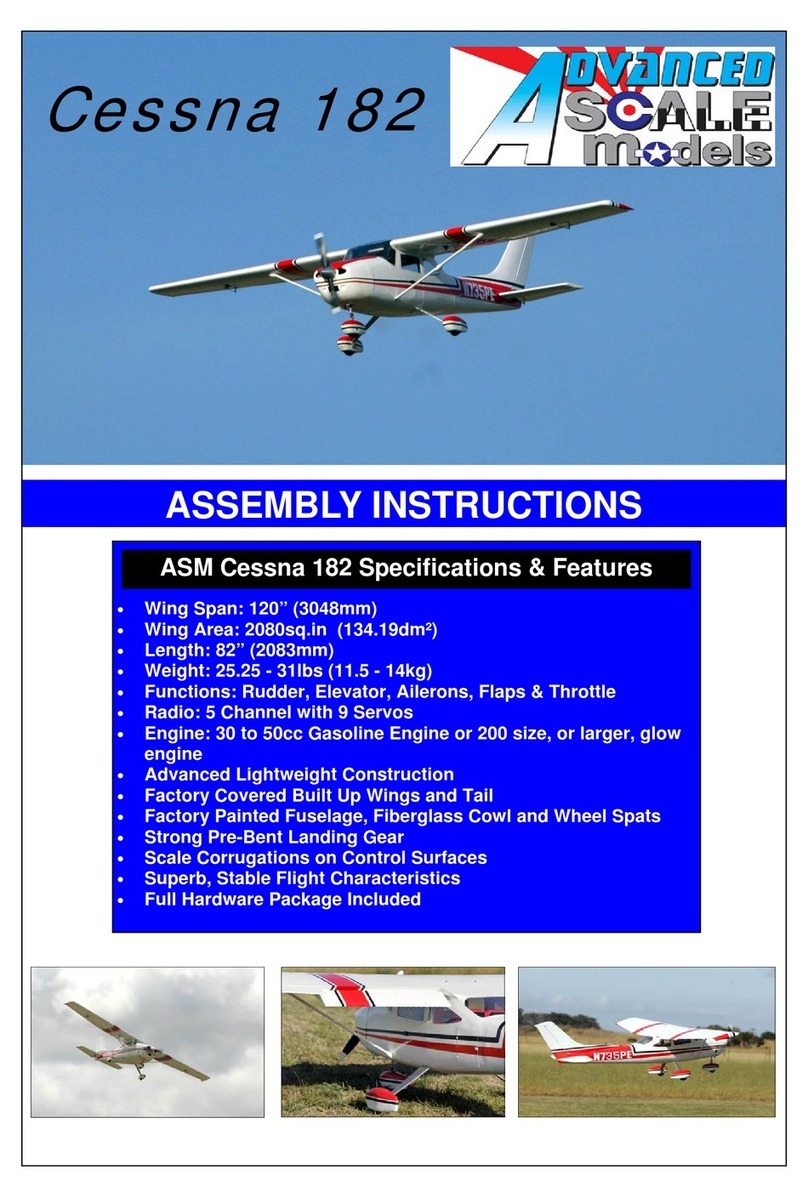
ASM
ASM Cessna 182 Assembly instructions
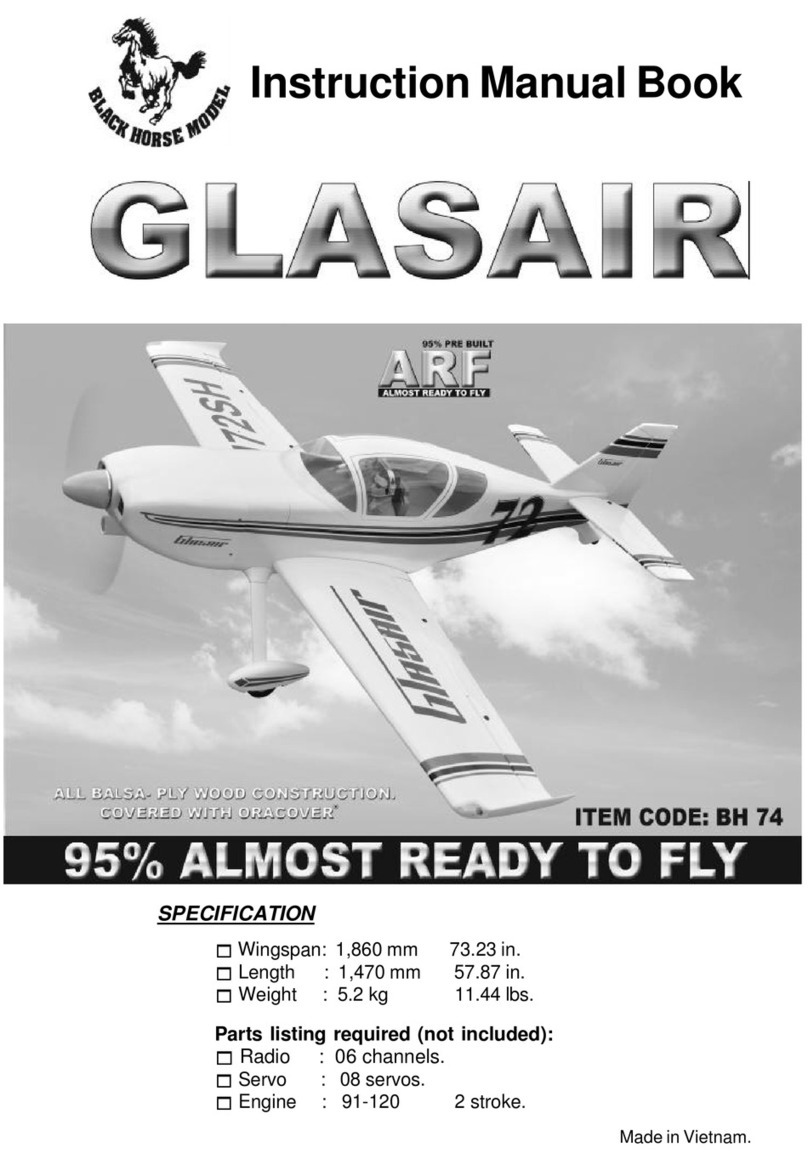
Black Horse Model
Black Horse Model GLASAIR Instruction manual book
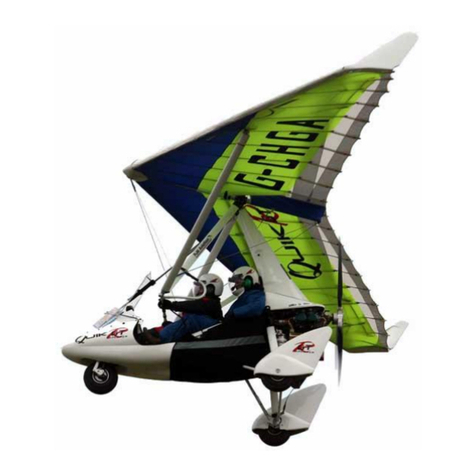
P&M Aviation
P&M Aviation QUIK-GTR Operator's manual
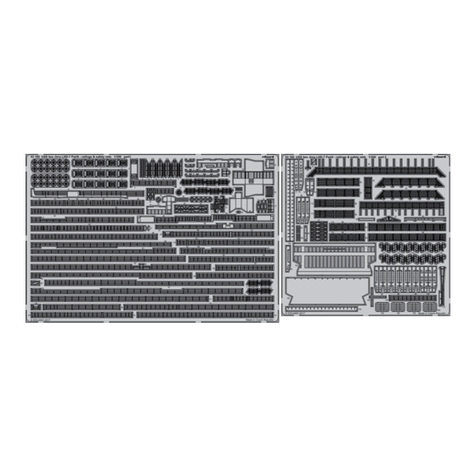
Eduard
Eduard USS Iwo Jima LHD-7 Part4 - railings & safety nets... quick start guide
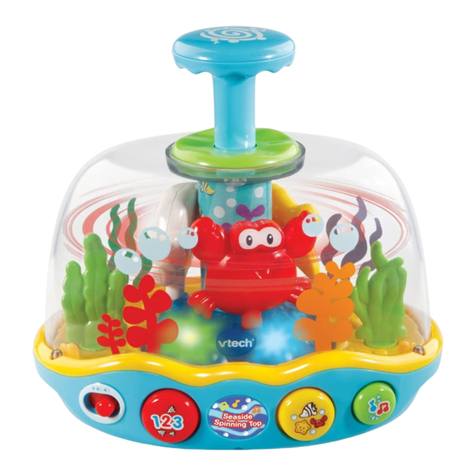
VTech Baby
VTech Baby Seaside Spinning Top Parents' guide
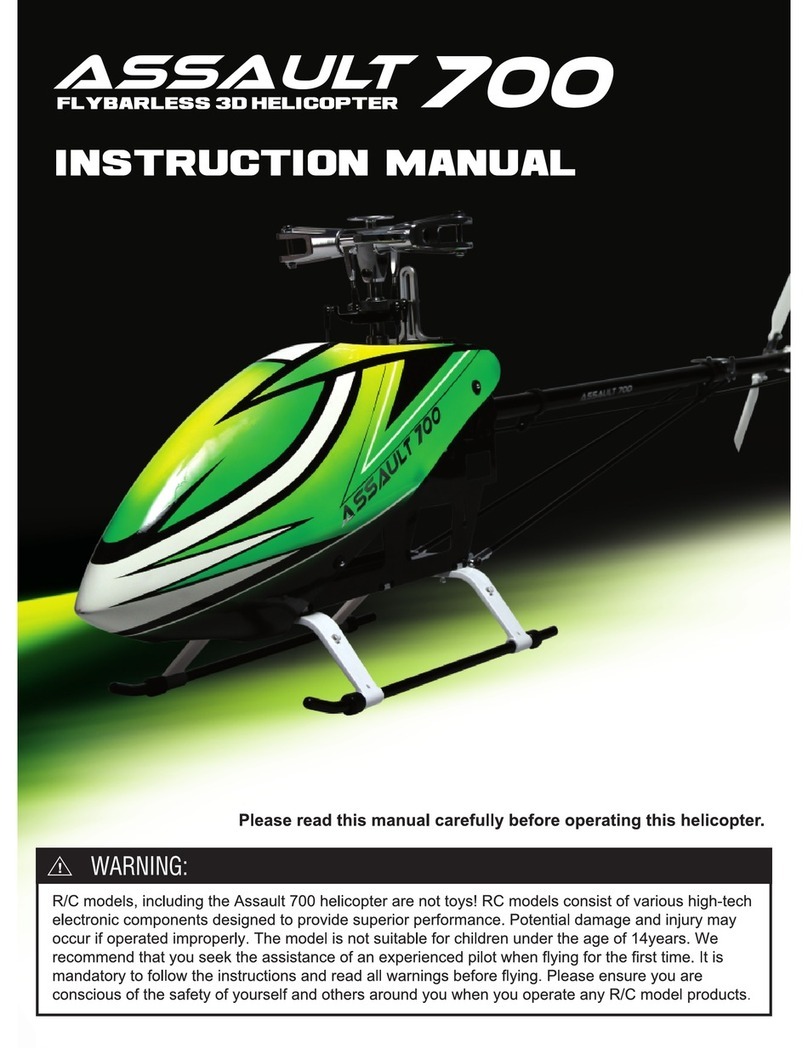
Assault
Assault 700 DFC instruction manual


